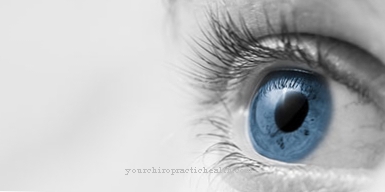Iridocyclitis is a simultaneous inflammation of the iris and ciliary body. The causes are varied and specialist treatment is always required. Visual impairment and even complete blindness are a consequence of iridocyclitis if it does not heal quickly.
What is iridocyclitis?

© Alexander Pokusay - stock.adobe.com
The Iridocyclitis is inflammation inside the eye. The iris is affected on the one hand and the ciliary body on the other. This is a ring-shaped structure that, on the one hand, serves as a suspension for the iris and, on the other hand, manages lens accommodation (adjustment of visual acuity) with a likewise ring-shaped muscle.
The iris has its own muscle structures and works like the aperture of a camera. Due to the close anatomical connection of the iris with the ciliary body, inflammations in both organs usually occur in combination. Therefore, according to the definition, there is a compact clinical picture called iridocyclitis.
causes
The Iridocyclitis as an inflammatory disease is basically due to two causes:
1. Infections caused by bacteria or viruses. The infection with gonococci ("gonorrhea") or with herpes viruses (herpes simplex or herpes zoster: "shingles") spread to the region of the anterior and posterior chambers of the eye. Infections with the bacterium Leptospira are very rarely the cause (Weil's disease).
2. Non-infectious causes. Very different triggers play a role here. Irritant chemicals are known to be an agent, but underlying systemic diseases are more often the cause of iridocyclitis. A number of autoimmune diseases of the rheumatic type cause eye irritation.
Juvenile arthritis and chronic bowel inflammation (Crohn's disease) are known to be triggers, as well as diseases of the connective tissue such as sarcoid and Sjogren's syndrome. Bechterew syndrome is probably also an autoimmune disorder. This disease, primarily of the spine, is also a trigger for iridocyclitis.
Symptoms, ailments & signs
The characteristic symptoms of iridocyclitis include blurred vision and eye pain. People are overly sensitive to light and experience double vision. Depending on the type and severity of the eye inflammation, further visual disturbances can occur, for example blurred vision or partial visual field loss.
In severe cases, temporary blindness occurs in one or both eyes. Externally, the disease can be recognized by the color changes in the pupil. Adhesions between the iris and cornea indicate iridocyclitis. A clear sign are the deposits of protein on the cornea. The pupil reacts slowly to movements and the gaze often appears disoriented.
Usually both eyes are affected by the adhesions and reaction disorders. At the beginning, however, iridocyclitis only occurs on one side. If there is no treatment, the damage to the ciliary body continues until the entire eye shrinks.
The result is the patient's blindness. If the disease is identified and treated early, serious complications can be prevented. The symptoms then subside after a few weeks without the person concerned having to fear long-term consequences or further complications.
Diagnosis & course
A Iridocyclitis causes sore eyes and makes patients overly sensitive to light making them feel easily blinded. In addition, there are visual disturbances to complain about. With an ophthalmoscopy, the specialist recognizes the typical picture with turbidity of the aqueous humor.
It is possible that the iris and cornea or even the lens have already stuck together. When it comes to this, both eyes will be affected, because initially iridocyclitis only begins on one side. Treatment by the ophthalmologist can now prevent possible serious consequences of iridocyclitis. Not only can calcium infiltrate the cornea, but also green (glaucoma) and cataracts (cataracta complicata).
When the ciliary body is damaged to the point that it no longer secretes aqueous humor, the entire eye begins to shrink. In the course of such a development, blindness is ultimately a consequence of iridocyclitis.
Complications
Iridocyclitis usually causes discomfort to the eyes. In most cases, those affected suffer from visual problems and poor eyesight. Furthermore, the patient may become completely blind without treatment. It is not uncommon for visual problems, especially in young patients, to lead to depression and other psychological disorders.
The quality of life of the patient is significantly reduced by the iridocyclitis. In some cases, the person concerned is then dependent on the help of other people in everyday life. There is also a high sensitivity to light. It is not uncommon for the pupil's reaction to be slowed down and there is also pain in the eyes. The eye pain can often spread to other areas of the body and lead to pain and various complaints there.
Treatment for iridocyclitis is usually done by an ophthalmologist and does not lead to further complications. The affected person is dependent on taking medication. These can lead to side effects in some patients. Iridocyclitis does not affect life expectancy. In some cases antibiotics may also be necessary.
When should you go to the doctor?
If symptoms such as eye pain, sensitivity to light, or visual disturbances are noticed, a doctor should always be consulted. If the symptoms appear suddenly and have not subsided after a week at the latest, it is best to see your family doctor. A doctor should be consulted on the same day if there are additional symptoms such as adhesions between the iris and cornea or changes in the color of the pupil. Medical advice is required at the latest when the eyesight deteriorates or even complete blindness occurs.
The disease can be treated well if it is recognized and treated early on. People who suffer from the symptoms mentioned should go to an ophthalmologist or a general practitioner. Iridocyclitis occurs primarily in connection with viral infections and after contact with irritating chemicals. Chronic intestinal inflammation such as Crohn's disease and connective tissue diseases such as sarcoid can also cause the symptoms. Anyone who belongs to these risk groups should consult the responsible doctor if the symptoms are mentioned.
Treatment & Therapy
The Iridocyclitis requires different causal therapies depending on the cause. If there are systemic underlying diseases, your specialist doctor must be consulted. In the case of non-infectious inflammation triggers, this will usually be the rheumatologist.
The ophthalmologist treats the symptoms of the eye with glucocorticoids. These cortisone-like drugs have anti-inflammatory effects and are initially used as eye drops. If this does not lead to success, the preparations are applied as oral medication. Immunosuppressants, which represent an alternative to hormone preparations, are also suitable for reducing inflammatory reactions.
Because glucocorticoids have serious side effects, including those eye diseases that should actually be prevented. As a further medication, the patient is given eye drops, which temporarily dilate the pupil. This effect - of atropine, for example - is that the iris stays in motion and does not stick to the lens or cornea.
In the case of infectious iridocyclitis, the doctor must fight the pathogens. Antibiotics target invading bacteria and antivirals inhibit virus replication. General relief is provided by infrared radiation for iridocyclitis.
You can find your medication here
➔ Medicines for eye infectionsOutlook & forecast
The prognosis of iridocyclitis depends on the causal disorder. If the affected person was exposed to irritating chemicals, spontaneous healing occurs in most cases within a short time. A doctor is not needed in these situations. In future, the protective measures for the eye should be increased or the affected areas should be avoided.
In the event of an infection by viruses or bacteria, the existing symptoms increase without medical care. The pathogens multiply and can spread further in the organism. In people with a weakened immune system, the inflammation can be expected to spread. There is a risk of decreased vision and, in exceptional cases, blindness of the person concerned.
If drug treatment is initiated in good time, an alleviation of the symptoms is documented. As soon as the medication shows its effect, the germs die and are independently transported away from the organism. A regeneration process takes place at the same time. This minimizes the existing complaints and gradually initiates recovery. The prognosis in these cases is favorable. Nevertheless, in the course of life, a renewed infestation of viruses or bacteria can occur. The disease can break out again at any time. The prognosis in the event of a re-infestation of the pathogen remains favorable as soon as medical treatment takes place at an early stage.
prevention
One Iridocyclitis General and specific prevention is beyond simple measures. If the mentioned systemic underlying diseases are found, the ophthalmologist should be informed about them during the routine check-up. As an informed patient, everyone should keep in mind that infectious diseases tend to spread throughout the body. Those who also pay attention to their eyes here are well advised. If complete avoidance is not possible, then treatment of iridocyclitis should be very early.
Aftercare
With iridocyclitis, those affected usually have no or only very few options for direct follow-up care. First and foremost, a doctor should be consulted very early on with this disease so that no further complications or complaints can arise. Early detection of the disease has a very positive effect on the further course and can also prevent the symptoms from worsening.
In most cases, patients are dependent on taking various medications and continuing to use eye drops. The doctor's instructions must always be followed. The medication should be taken in the correct dosage and, above all, regularly. In the case of antibiotics, care should be taken not to take them with alcohol.
In the case of iridocyclitis, regular checks and examinations by a doctor are also necessary so that damage to the eyes can be recognized and treated at an early stage. As a rule, self-healing cannot occur. The further course depends heavily on the time of diagnosis, although life expectancy is usually not reduced by iridocyclitis.
You can do that yourself
Iridocyclitis definitely requires medical treatment. Individual symptoms can be alleviated through some self-help measures and home remedies.
First, measures should be taken to counteract the glare sensitivity of the eyes. This can be done by darkening your own home, wearing dark sunglasses outdoors and not looking directly into the sun or bright lights. If possible, you should avoid working on the computer screen, and reading or watching TV should also be severely restricted. Contact lenses may only be used again after consulting a doctor. The doctor will recommend that the patient switch to glasses until the disease has completely resolved.
In general, iridocyclitis is best treated by following the instructions given by your ophthalmologist. The prescribed eye drops should be used as directed and, if necessary, supplemented with oral medication.Home remedies should not be used at first as they can further strain the eye. Only after the disease has subsided, cooling pads or masks may be used to support aftercare. These measures should also be discussed with the ophthalmologist beforehand.





.jpg)


















.jpg)



